How Robotics Will Enhance Search and Rescue Operations
In today's world, where natural disasters and emergencies seem to strike without warning, the need for rapid and effective response mechanisms has never been more critical. This is where robotics comes into play, revolutionizing the way we approach search and rescue operations. Imagine a scenario where a massive earthquake hits a populated area; the traditional methods of searching for survivors can be slow and perilous. Enter robotics—these advanced machines are not just tools; they are lifesavers, equipped with the capability to navigate treacherous terrains, gather data, and even assist in locating trapped individuals. The integration of robotics into rescue missions is not merely an enhancement; it is a transformation that promises to save lives and expedite the recovery process.
As we delve deeper into this topic, we will explore the significant advancements in robotic technology, the various types of rescue robots currently in use, and the incredible benefits they bring to emergency operations. From unmanned aerial vehicles (UAVs) soaring high above disaster zones to ground-based robots tirelessly searching through rubble, the landscape of rescue missions is changing. These machines are designed to tackle the unique challenges that arise during emergencies, making them indispensable allies for human rescuers.
Furthermore, the incorporation of artificial intelligence into these robotic systems is pushing the boundaries of what is possible. With AI, robots can learn from their experiences, adapt to new situations, and even make autonomous decisions that enhance their operational effectiveness. The future of search and rescue operations is not just about using robots; it's about leveraging cutting-edge technology to create a cohesive and efficient rescue strategy.
As we move forward, we will also address the challenges faced by these robotic systems, as no technology is without its limitations. Understanding these challenges is crucial for improving the effectiveness of rescue operations. In addition, we will look at the future trends in robotic rescue operations, including the exciting potential of swarm robotics and advancements in communication technology. So, buckle up as we embark on this journey to uncover how robotics is set to redefine the landscape of search and rescue missions!
The history of robotics in search and rescue is a fascinating tale of innovation and necessity. From the early days of simple mechanical devices to today's sophisticated machines, the evolution has been marked by significant milestones that have shaped current practices. Initially, robots were primarily used in controlled environments, but as technology progressed, their application expanded into more dynamic and unpredictable scenarios. For instance, the introduction of remote-controlled vehicles during the aftermath of disasters like 9/11 showcased the potential of robotics in hazardous environments.
Robots in search and rescue operations come in various forms, each tailored to meet specific needs and challenges. Understanding these types is essential for appreciating their roles in emergencies.
UAVs, commonly known as drones, have become a cornerstone of modern search and rescue operations. They provide invaluable aerial surveillance, allowing rescue teams to assess situations from above. With their ability to cover vast areas quickly, UAVs can collect real-time data that is crucial for making informed decisions during emergencies.
Drones are utilized in various ways during disaster scenarios, including:
- Mapping: Creating detailed maps of affected areas to identify hotspots for rescue efforts.
- Locating Victims: Using thermal imaging to spot individuals trapped under debris.
- Assessing Damage: Providing visual feedback on the extent of destruction to inform response strategies.
Despite their advantages, UAVs are not without challenges. Factors such as limited battery life, regulatory restrictions, and adverse weather conditions can hinder their effectiveness in rescue operations. Overcoming these hurdles is essential for maximizing their potential.
Ground robots are designed to navigate challenging terrains, assisting rescue teams by transporting supplies, conducting searches, and providing communication support in disaster zones. Their rugged design allows them to maneuver through rubble and debris, making them invaluable assets in chaotic environments.
The integration of robotics into search and rescue operations brings a multitude of benefits. Firstly, it significantly improves efficiency and safety, enabling faster response times. By utilizing robots, human rescuers can minimize their exposure to danger, allowing for safer and more effective operations. Additionally, robots equipped with advanced sensors gather critical data during missions, aiding in real-time decision-making and improving overall mission outcomes.
By deploying robots in hazardous environments, human rescuers can reduce their risk of injury or fatality. This shift not only enhances the safety of rescue teams but also allows them to focus on strategic planning and coordination rather than putting themselves in harm's way.
Robots equipped with sensors gather vital information during missions, which can be analyzed to improve future operations. This data-driven approach enhances situational awareness and allows for more informed decision-making.
Artificial intelligence is a game-changer for rescue robotics. By enhancing the capabilities of these machines, AI enables them to make autonomous decisions, recognize patterns, and adapt to dynamic environments. This integration is crucial for optimizing rescue operations and ensuring that robots can operate effectively in the field.
Machine learning algorithms empower robots to learn from past missions, improving their performance and efficiency in future search and rescue operations. This continuous learning process ensures that robots become more adept at navigating challenges and making critical decisions.
With autonomous navigation systems, robots can maneuver through complex environments without human intervention. This capability optimizes search patterns and increases operational effectiveness, allowing for more comprehensive coverage of disaster areas.
The future of robotics in search and rescue is promising, with emerging technologies set to revolutionize the field. Innovations such as swarm robotics, where multiple robots collaborate to cover larger areas, and advancements in communication technology will enhance coordination among rescue teams and robots.
Swarm robotics involves multiple robots working collaboratively to enhance search capabilities. This approach not only improves efficiency but also increases overall mission success rates, making it a critical area of development for the future.
Improved communication technologies will facilitate better coordination among rescue teams and robots, ensuring seamless information sharing and enhancing operational efficiency in critical situations. This interconnectedness is vital for maximizing the effectiveness of robotic systems in emergencies.
Q: How do rescue robots communicate with human teams?
A: Rescue robots are equipped with advanced communication systems that allow them to relay information in real-time to human teams, ensuring effective coordination.
Q: Can robots operate in all types of disasters?
A: While robots are designed for various environments, their effectiveness can be limited by factors such as terrain, weather conditions, and the specific challenges presented by different types of disasters.
Q: What is the future of robotics in search and rescue?
A: The future is bright, with advancements in AI, swarm robotics, and communication technologies set to enhance the capabilities of rescue robots significantly.

The Evolution of Robotics in Rescue Missions
The journey of robotics in search and rescue missions has been nothing short of remarkable. It all began in the early 20th century when the concept of using machines to assist humans in perilous situations first took root. The initial experiments were rudimentary at best, often involving simple mechanical devices designed to help locate individuals in collapsed structures or hazardous environments. Over the decades, technological advancements have transformed these early prototypes into sophisticated robots capable of performing complex tasks in extreme conditions.
One of the significant milestones in this evolution came in the 1980s with the development of remote-controlled vehicles. These vehicles were primarily used in military applications but paved the way for their adaptation in civilian rescue operations. The introduction of sensors and cameras allowed these robots to relay real-time information back to rescue teams, significantly enhancing situational awareness. As technology progressed, the 1990s saw the emergence of autonomous robots that could navigate through debris and perform search tasks without direct human control.
Fast forward to the 21st century, and we are witnessing an explosion in the capabilities of rescue robotics. With the integration of advanced AI and machine learning, modern rescue robots can now analyze their surroundings, make autonomous decisions, and adapt to changing environments. This leap in technology has not only improved the efficiency of search and rescue operations but has also expanded their applications. Today, these robots are deployed in various scenarios, from natural disasters like earthquakes and floods to man-made emergencies such as industrial accidents.
To give you a clearer picture of this evolution, here's a brief timeline of significant developments in rescue robotics:
| Year | Milestone |
|---|---|
| 1980s | Development of remote-controlled vehicles for military use. |
| 1990s | Introduction of autonomous robots capable of navigating debris. |
| 2000s | Integration of AI and machine learning in rescue robots. |
| 2010s | Deployment of drones in disaster response operations. |
| 2020s | Advancements in swarm robotics and enhanced communication technologies. |
The evolution of robotics in rescue missions is a testament to human ingenuity and the relentless pursuit of safety and efficiency. Each advancement not only reflects technological progress but also a deepening commitment to saving lives. As we continue to innovate, the future holds even greater promise for the integration of robotics in emergency response, with the potential to revolutionize how we approach rescue operations.
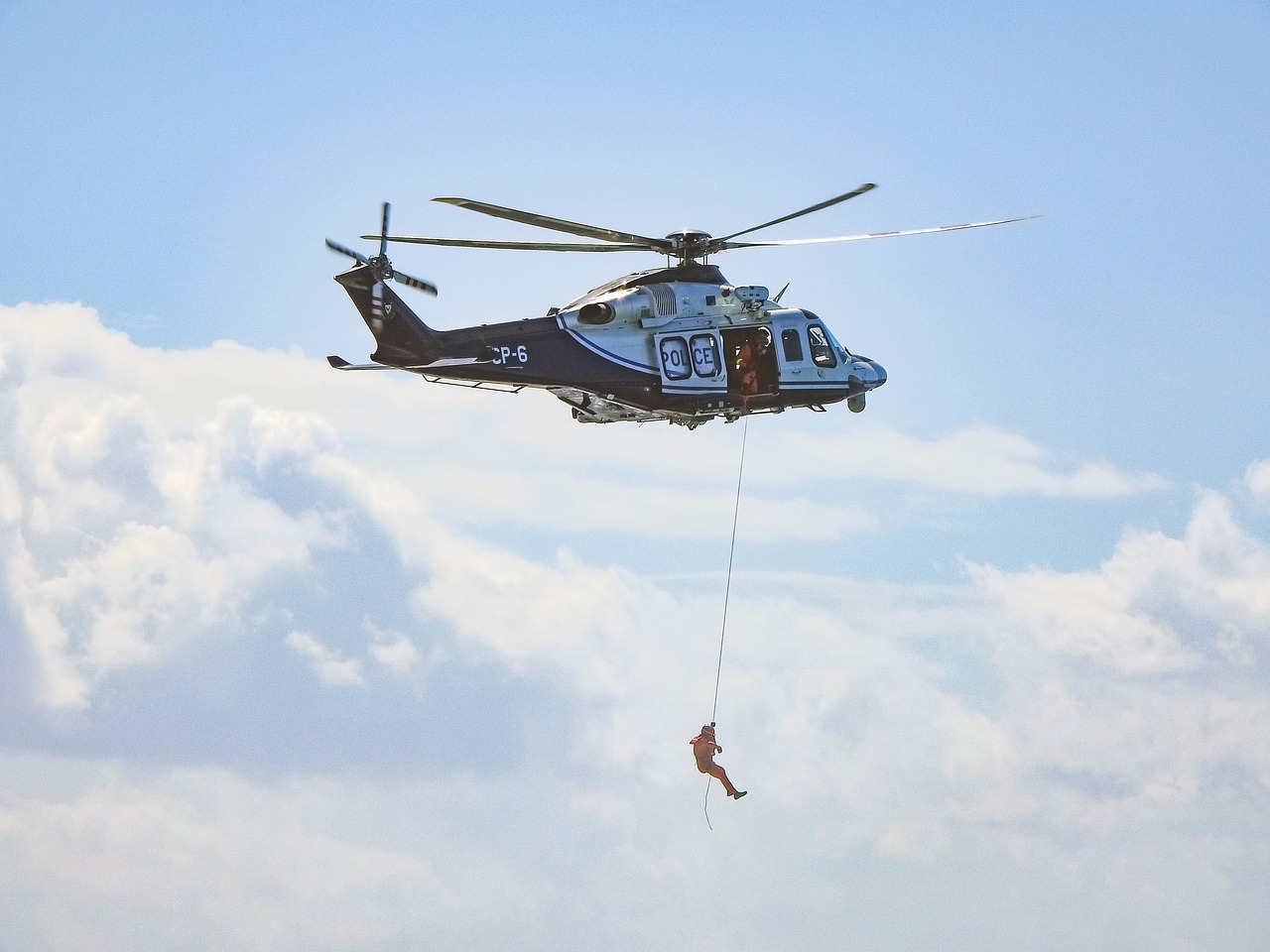
Types of Rescue Robots
When we think about search and rescue operations, the image that often pops into our minds is that of brave individuals navigating through treacherous terrains, but what if I told you that the future of these missions is increasingly dependent on robots? Yes, robotics technology has made significant strides, leading to the development of various types of rescue robots, each tailored for specific environments and challenges. These robotic heroes can be broadly categorized into three main types: Unmanned Aerial Vehicles (UAVs), Ground-Based Robots, and Underwater Vehicles.
First up, we have Unmanned Aerial Vehicles, commonly known as drones. These flying marvels are equipped with advanced sensors and cameras that allow them to survey large areas from above, making them invaluable in search operations. Imagine being able to spot a missing person from hundreds of feet in the air, all while collecting real-time data that can dramatically enhance the situational awareness of rescue teams on the ground. UAVs can quickly cover vast distances, especially in hard-to-reach locations, where human rescuers might struggle to navigate.
Next, let’s talk about Ground-Based Robots. These robotic companions are designed to traverse challenging terrains, including rubble, mud, and even steep inclines. They assist human rescuers by transporting supplies, conducting searches, and providing communication support in disaster zones. Picture a robot rolling through the debris of a collapsed building, equipped with cameras and sensors, sending back vital information about the environment and potential survivors. This not only speeds up the rescue process but also ensures that human rescuers can focus on the most critical tasks.
Lastly, we have Underwater Vehicles, which are essential for rescue missions in aquatic environments. These robots can dive deep into flooded areas or underwater wrecks, searching for victims or assessing damage that would be perilous for human divers. With their ability to withstand high pressure and visibility challenges, underwater vehicles are crucial in scenarios like maritime disasters or floods, where every second counts.
In summary, the variety of rescue robots available today is a testament to human ingenuity and the relentless pursuit of improving safety and efficiency in emergency situations. Each type of robot plays a unique role in enhancing rescue operations, ultimately working together to save lives. As technology continues to evolve, we can expect even more sophisticated and capable robots to join the ranks of these lifesaving machines.
- What are the main types of rescue robots?
Rescue robots can be categorized into three main types: Unmanned Aerial Vehicles (UAVs), Ground-Based Robots, and Underwater Vehicles, each serving unique purposes in rescue operations. - How do UAVs assist in search operations?
UAVs provide aerial surveillance, collect real-time data, and can quickly cover vast areas, which is essential for locating missing persons and assessing disaster zones. - What challenges do ground robots face?
Ground robots must navigate difficult terrains and may face obstacles such as debris and unstable surfaces, making their design critical for effective performance. - Can underwater vehicles operate in extreme conditions?
Yes, underwater vehicles are designed to withstand high pressure and poor visibility, making them ideal for search and rescue missions in aquatic environments.
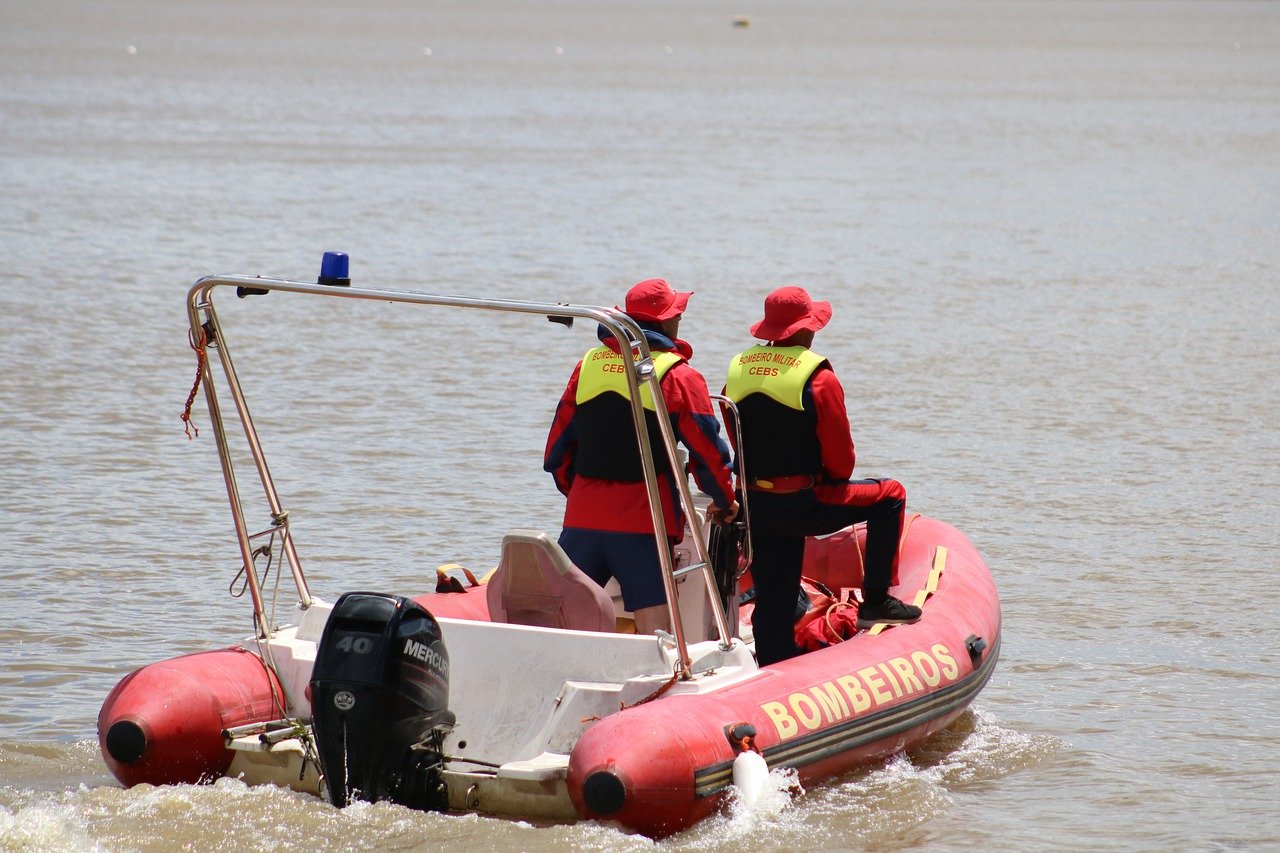
Unmanned Aerial Vehicles (UAVs)
Unmanned Aerial Vehicles, commonly known as UAVs or drones, have revolutionized the way search and rescue operations are conducted. These high-tech machines are not just flying gadgets; they are equipped with sophisticated technology that allows them to perform a variety of critical functions in emergencies. Imagine being able to survey a disaster site from the sky, pinpointing locations of victims, and assessing damage in real-time—all without putting human lives at risk. This is the reality that UAVs bring to the table.
One of the most significant advantages of UAVs in search and rescue missions is their ability to cover vast areas quickly. Traditional search methods can be time-consuming and labor-intensive, often requiring teams to physically traverse difficult terrains. In contrast, drones can soar above obstacles, providing a bird’s-eye view of the situation below. This capability is crucial in scenarios where time is of the essence, such as during natural disasters where every second counts.
UAVs are equipped with various technologies that enhance their operational effectiveness. For instance, many drones come with high-resolution cameras and thermal imaging capabilities. These features allow rescuers to:
- Identify heat signatures of individuals trapped under rubble.
- Create detailed aerial maps of affected areas.
- Monitor environmental conditions, such as smoke or heat, which can indicate potential hazards.
Moreover, the real-time data collection capabilities of UAVs are invaluable. They can transmit live video feeds and information back to rescue teams, enabling them to make informed decisions on the ground. This level of situational awareness can significantly improve the effectiveness of rescue operations, allowing teams to prioritize their efforts based on the most pressing needs.
However, like any technology, UAVs come with their own set of challenges. For instance, their limited battery life can restrict the duration of their missions, especially in extensive search areas. Additionally, regulatory restrictions can complicate their deployment, as operators must navigate airspace regulations that vary by region. Adverse weather conditions, such as strong winds or heavy rain, can also hinder drone operations, limiting their effectiveness in certain scenarios.
Despite these challenges, the potential of UAVs in search and rescue operations is undeniable. As technology continues to advance, we can expect to see improvements in drone capabilities, such as longer flight times, enhanced sensors, and better integration with other rescue technologies. The future looks bright for UAVs, and their role in saving lives during emergencies will undoubtedly continue to grow.
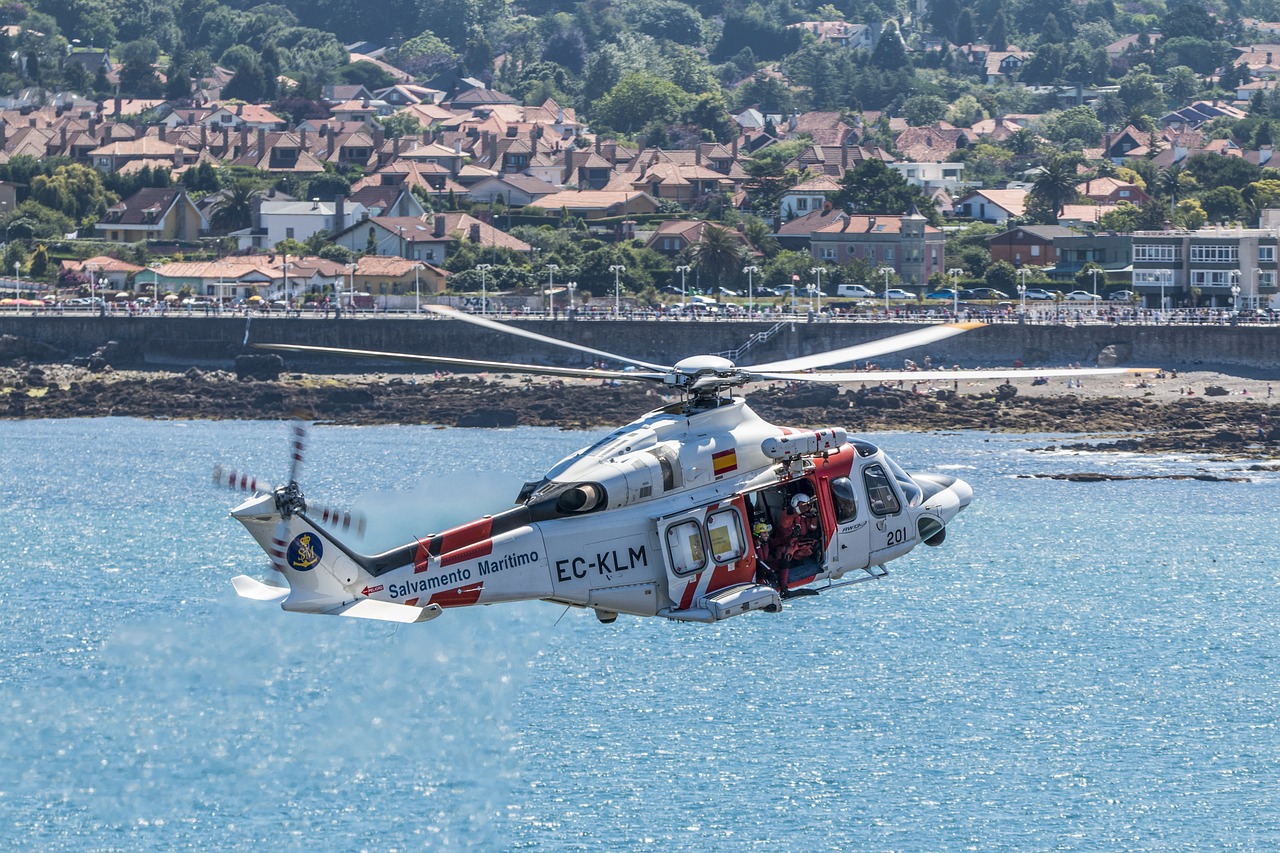
Applications of Drones in Disaster Scenarios
Drones have emerged as a game-changer in disaster scenarios, offering a unique blend of speed, efficiency, and versatility that traditional methods simply can't match. Imagine a situation where every second counts—drones swoop in, providing critical information that can mean the difference between life and death. Their ability to cover vast areas quickly and gather real-time data is revolutionizing how rescue teams operate in emergencies.
One of the most impressive applications of drones is their capability for mapping disaster zones. Equipped with high-resolution cameras and advanced sensors, drones can create detailed aerial maps that help rescue teams understand the extent of the damage. This is particularly useful in scenarios like earthquakes or floods where the landscape can change dramatically. By analyzing these maps, teams can identify the safest routes for reaching victims, ensuring that help arrives swiftly and efficiently.
Furthermore, drones excel at locating victims in hard-to-reach areas. Utilizing thermal imaging technology, drones can detect body heat, allowing them to pinpoint locations of individuals trapped under debris or lost in remote locations. This capability significantly enhances the chances of finding survivors, especially in large-scale disasters where human search efforts might be hampered by obstacles or danger.
Another vital role drones play is in damage assessment. After a disaster strikes, assessing the extent of the damage is crucial for effective response planning. Drones can fly over affected areas, capturing images and videos that provide rescue teams with a comprehensive overview of the situation. This data not only helps in immediate response efforts but also informs future recovery and rebuilding strategies.
However, the applications of drones extend beyond immediate rescue efforts. They also play a significant role in communication support. In many disaster scenarios, traditional communication networks are compromised. Drones can be deployed to establish temporary communication links, allowing rescue teams to share information and coordinate their efforts effectively. This capability ensures that everyone is on the same page, which is vital in chaotic environments.
In summary, the applications of drones in disaster scenarios are diverse and impactful. From mapping and locating victims to assessing damage and providing communication support, drones enhance the efficiency and effectiveness of search and rescue operations. Their ability to operate in challenging conditions and provide real-time information is invaluable, making them an essential tool in modern emergency response.
- How do drones improve search and rescue operations? Drones provide real-time data, enhance situational awareness, and can access hard-to-reach areas quickly, improving overall response times.
- What types of drones are used in disaster scenarios? Various drones are utilized, including fixed-wing drones for large area coverage and multi-rotor drones for detailed inspections and mapping.
- Can drones operate in adverse weather conditions? While many drones are designed to withstand some adverse weather, extreme conditions like heavy rain or strong winds can limit their effectiveness.
- Are drones used for victim location only? No, drones are also used for damage assessment, mapping, and facilitating communication in disaster scenarios.
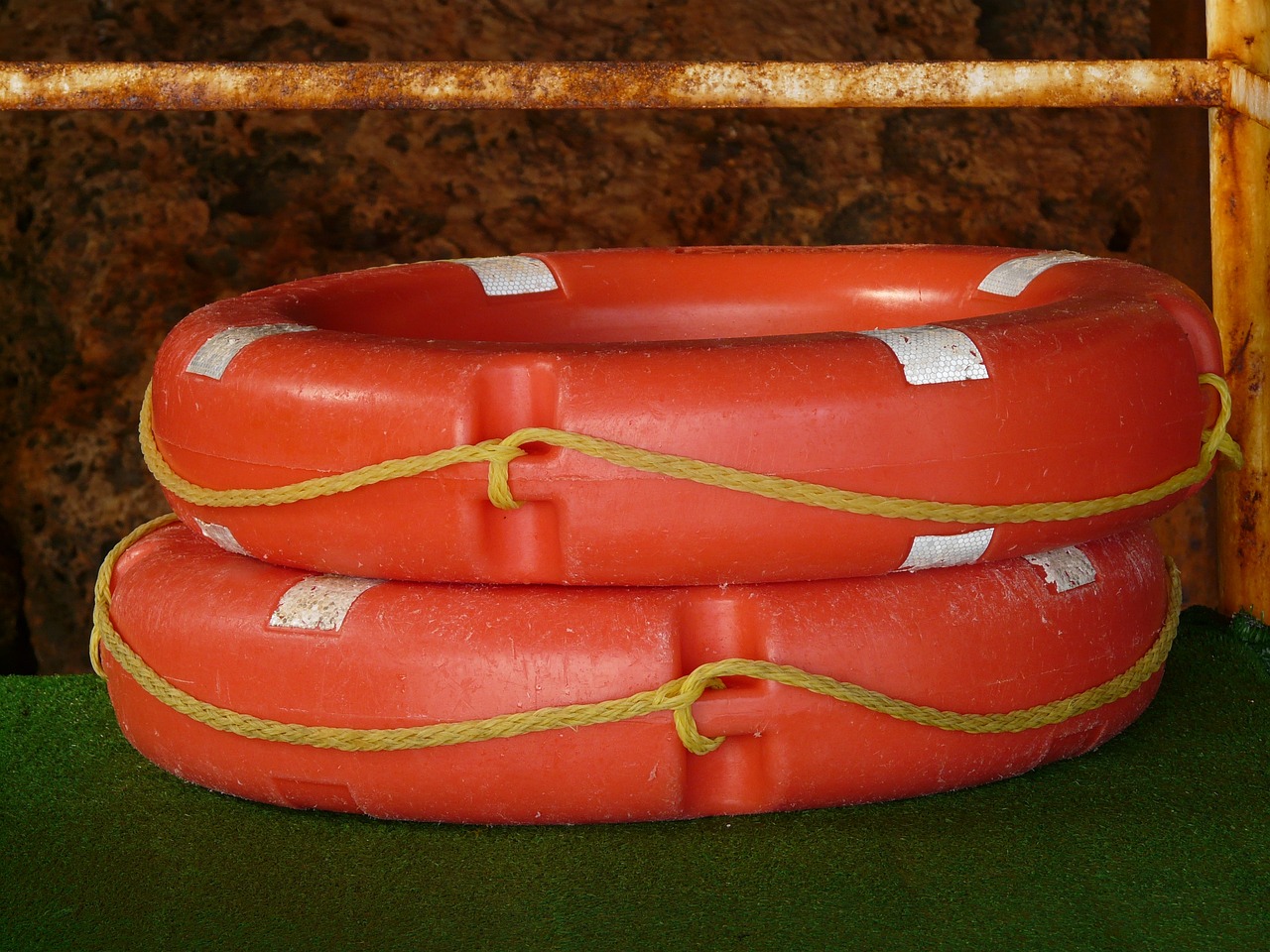
Challenges Faced by UAVs
While Unmanned Aerial Vehicles (UAVs) have revolutionized search and rescue operations, they are not without their challenges. One of the primary hurdles is limited battery life. Most drones can only operate for a short duration before needing to recharge or swap out batteries. This constraint can significantly impact their ability to cover large areas, especially in extensive disaster zones where every second counts. Imagine a drone that can only fly for 30 minutes when you need it to survey an entire landscape; it’s like trying to read a book with half the pages missing!
Another challenge is the regulatory restrictions that govern the use of UAVs. Different countries and regions have varying laws regarding where and how drones can be operated. These regulations can complicate deployment, especially in urgent situations where time is of the essence. For instance, a rescue team might be ready to deploy a drone, but if they can’t get the necessary permissions in time, valuable moments could be lost.
Adverse weather conditions also pose significant threats to UAV effectiveness. Drones are typically sensitive to strong winds, heavy rain, or snow, which can ground them or impair their functionality. Picture sending out a drone to locate a missing person in a heavy storm; the very conditions that necessitate its use could render it useless. This unpredictability can be frustrating for rescue teams relying on UAVs to gather critical information.
Furthermore, technical malfunctions are an ever-present risk. Like any piece of technology, drones can experience failures, whether due to software glitches, hardware breakdowns, or communication issues. A malfunctioning drone can lead to lost data or, worse, a compromised mission. It’s essential for rescue teams to have backup plans and alternative methods ready to go in case their UAVs fail them in the field.
Lastly, the need for skilled operators cannot be overlooked. While UAV technology has become more user-friendly, effective operation still requires trained personnel. Rescue teams must invest time and resources into training their members to handle these sophisticated machines, which can be a logistical challenge in itself. It’s like having a high-performance sports car that only a few can drive; without the right skills, it’s just a shiny object sitting in the garage!
In summary, while UAVs have immense potential in search and rescue operations, challenges such as limited battery life, regulatory restrictions, adverse weather conditions, technical malfunctions, and the need for skilled operators must be addressed. Overcoming these obstacles will enhance the effectiveness of drones and ultimately save more lives in emergencies.
- What are UAVs? UAVs, or Unmanned Aerial Vehicles, are drones used for various purposes, including search and rescue operations.
- How do UAVs help in search and rescue? They provide aerial surveillance, real-time data collection, and can access hard-to-reach areas quickly.
- What are the main challenges UAVs face? Challenges include limited battery life, regulatory restrictions, adverse weather conditions, technical malfunctions, and the need for skilled operators.
- Can UAVs operate in bad weather? Generally, UAVs struggle in poor weather conditions, which can limit their effectiveness during critical missions.

Ground-Based Robots
Ground-based robots are revolutionizing the way search and rescue operations are conducted, providing a vital lifeline in disaster scenarios where human rescuers may face insurmountable challenges. These remarkable machines are engineered to traverse rugged terrains, navigate through debris, and reach areas that are often inaccessible to humans. Imagine a scene where a building has collapsed due to an earthquake; the chaos and uncertainty can be overwhelming. Now, picture a ground robot, equipped with advanced sensors and cameras, systematically searching through the rubble, locating trapped survivors, and relaying critical information back to rescue teams. It's a game-changer!
These robots come in various shapes and sizes, each designed with specific functionalities tailored to meet the demands of different environments. For instance, some ground robots are equipped with tracks for navigating rough terrains, while others may have wheels for smoother surfaces. Furthermore, many of these robots are outfitted with high-definition cameras, thermal imaging, and even robotic arms, enabling them to perform tasks such as lifting debris or delivering supplies. The versatility of ground-based robots makes them indispensable in modern rescue operations.
One of the most significant advantages of using ground robots in search and rescue missions is their ability to operate in hazardous conditions without putting human lives at risk. For example, during a chemical spill or a fire, deploying a robot can significantly reduce the danger faced by human rescuers. Ground robots can also carry heavy loads, such as medical supplies or food, which can be crucial for sustaining victims until help arrives. The efficiency of these robots not only enhances the speed of rescue operations but also increases the overall safety of the mission.
Moreover, the integration of artificial intelligence into ground robots has further enhanced their capabilities. These robots can analyze their surroundings, make autonomous decisions, and adapt to changing conditions in real-time. For instance, if a ground robot encounters an obstacle, it can reroute itself to continue its search without human intervention. This level of autonomy is particularly beneficial in chaotic environments where every second counts.
As we look to the future, the role of ground-based robots in search and rescue operations is expected to expand even further. With advancements in technology, we can anticipate the development of even more sophisticated robots that can work alongside human teams, creating a seamless synergy between man and machine. The potential for these robots to save lives is not just a dream; it’s becoming a reality, one mission at a time.
- What are ground-based robots used for in search and rescue operations?
Ground-based robots are utilized to navigate difficult terrains, locate victims, transport supplies, and provide communication support in disaster zones. - How do ground robots enhance safety for human rescuers?
By deploying robots in hazardous environments, human rescuers can minimize their exposure to danger, allowing for safer and more effective operations. - What technologies do ground robots use to navigate and search?
Ground robots are equipped with various technologies, including sensors, cameras, thermal imaging, and artificial intelligence for autonomous navigation and decision-making. - Can ground robots operate in extreme weather conditions?
Many ground robots are designed to withstand various weather conditions, although extreme environments may still pose challenges to their operation.
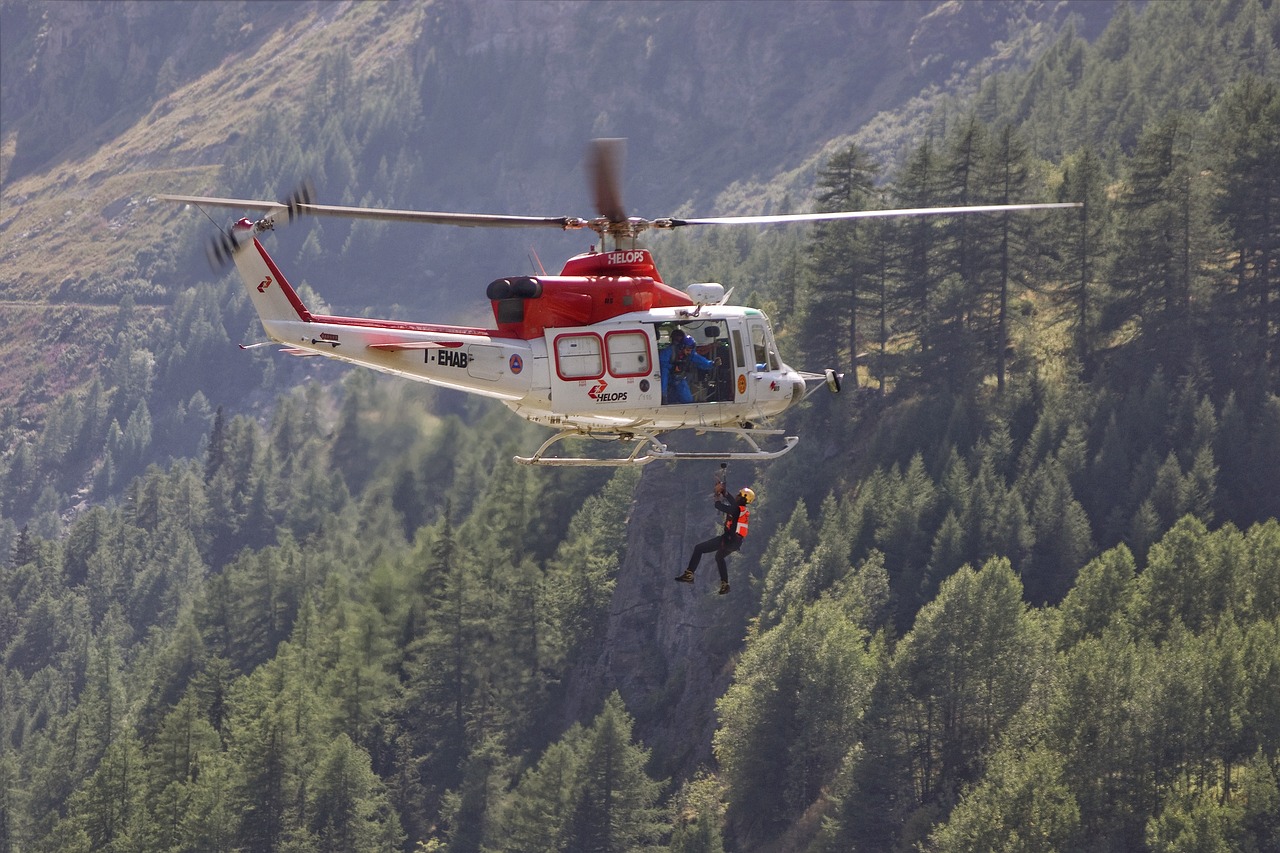
Benefits of Robotics in Search and Rescue
When it comes to search and rescue operations, every second counts. The integration of robotics into these high-stakes missions has proven to be a game changer, offering numerous benefits that enhance efficiency and effectiveness. Imagine a scenario where a disaster strikes, and time is of the essence. With the help of robotics, rescue teams can respond faster and more safely than ever before. The deployment of robots allows for a multi-faceted approach that not only accelerates the rescue process but also minimizes risks to human life.
One of the most significant advantages of using robotics in these situations is the increased safety for human rescuers. By sending in robots to assess dangerous environments, human rescuers can remain at a safe distance, reducing their exposure to potential hazards. Think of it like sending in a scout before the main team moves in. This method not only protects lives but also enhances the overall effectiveness of the operation. For instance, robots can be equipped with thermal imaging to locate victims trapped under rubble, allowing human teams to focus their efforts where they are most needed.
Moreover, the data collection capabilities of rescue robots are unparalleled. Equipped with advanced sensors and cameras, these machines gather critical information during missions, which is essential for real-time decision-making. Data analysis becomes a vital tool in understanding the situation on the ground. For example, robots can map out disaster zones, assess structural integrity, and even monitor environmental conditions. This data helps rescue teams formulate strategies and allocate resources more effectively, ensuring that every action taken is well-informed.
To illustrate the impact of robotics in search and rescue, consider the following table that summarizes key benefits:
| Benefit | Description |
|---|---|
| Increased Safety | Robots can operate in hazardous environments, reducing risk to human rescuers. |
| Faster Response Times | Robots can be deployed quickly to assess situations, speeding up the overall rescue process. |
| Enhanced Data Collection | Robots gather vital data that aids in real-time decision-making and mission planning. |
| Operational Efficiency | Robots can conduct repetitive tasks, freeing human rescuers for more critical responsibilities. |
Additionally, the use of robotics in search and rescue operations leads to operational efficiency. Robots can perform repetitive tasks, such as searching designated areas or transporting supplies, which allows human rescuers to focus on more complex and critical tasks. This division of labor not only optimizes the workflow but also ensures that human resources are utilized where they are most effective. In essence, robotics acts as a force multiplier, enhancing the capabilities of rescue teams.
In conclusion, the integration of robotics in search and rescue operations is not just a technological advancement; it is a transformative approach that enhances safety, speeds up response times, and improves data collection and operational efficiency. As we continue to innovate and refine these technologies, the potential for saving lives during emergencies grows exponentially. The future of search and rescue is not just about humans running into danger; it's about leveraging the power of robotics to create a safer, more effective response strategy.
- How do robots improve safety in rescue operations?
Robots can enter hazardous environments to assess dangers, reducing the risk to human rescuers.
- What types of data can rescue robots collect?
They can gather thermal images, structural data, and environmental conditions, which aid in decision-making.
- Are there limitations to using robotics in search and rescue?
Yes, challenges such as battery life, regulatory issues, and adverse weather can hinder effectiveness.
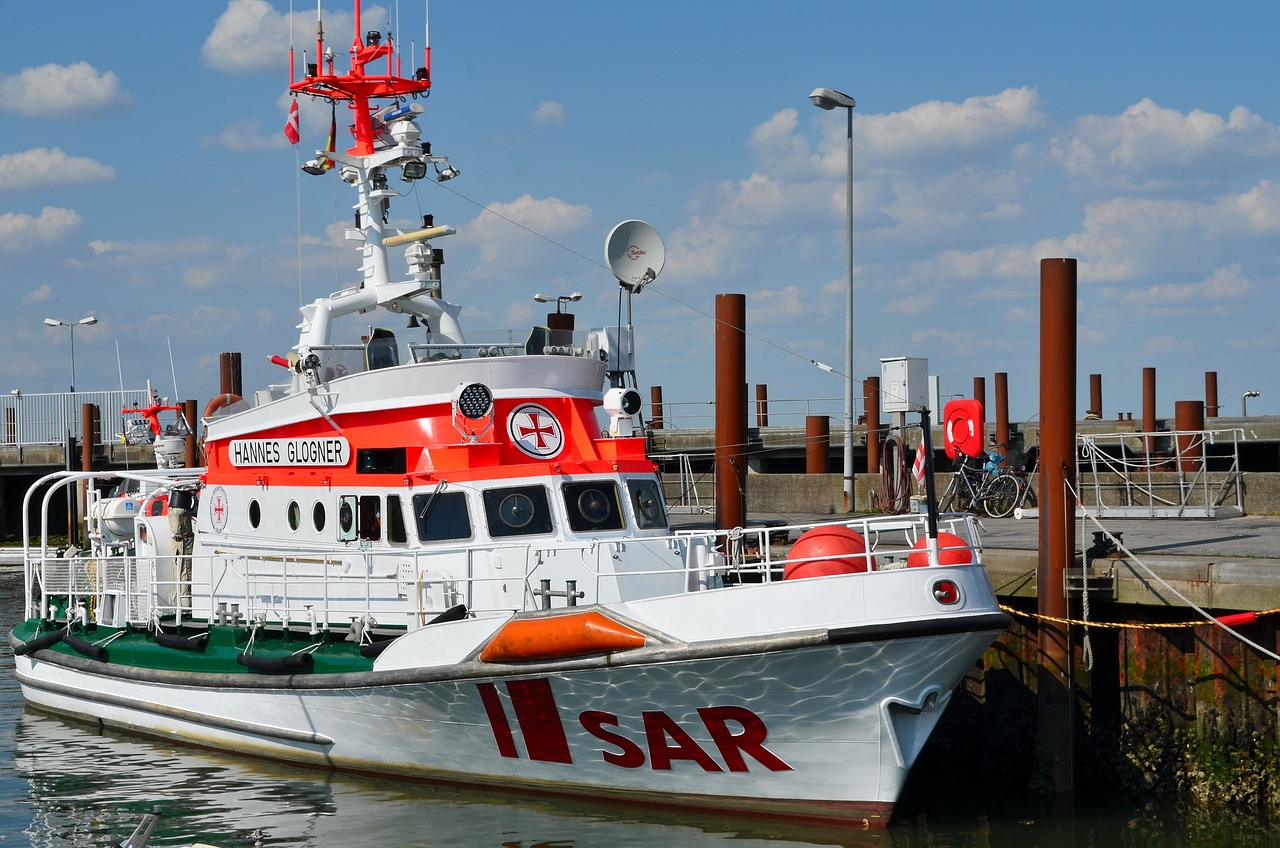
Increased Safety for Human Rescuers
In the high-stakes world of search and rescue operations, the safety of human rescuers is paramount. The introduction of robotics into these missions has revolutionized the way teams approach dangerous situations. Imagine a scenario where a building has collapsed due to an earthquake. The risks for human rescuers are significant, from aftershocks to potential secondary collapses. This is where robots come into play, acting as the first line of defense. By deploying ground robots and drones, teams can assess the situation without putting their lives at risk.
Robots can be equipped with advanced sensors and cameras, allowing them to navigate hazardous environments and gather crucial information. For instance, a drone can fly over a disaster zone to map the area and identify hotspots where survivors might be trapped. This not only saves time but also reduces the likelihood of human rescuers being injured. Moreover, ground robots can be sent into areas that are too dangerous for humans, such as areas with toxic gas leaks or unstable structures. By sending in these machines, rescue teams can gather data and plan their next steps with minimal risk.
Additionally, the use of robotics can lead to better coordination among rescue teams. When robots operate in the field, they can relay real-time data back to command centers. This information can include structural integrity assessments, temperature readings, and even the presence of survivors. By having access to this data, human rescuers can make informed decisions about how to approach a situation, further enhancing their safety. In essence, robots serve as both scouts and support, allowing teams to strategize effectively before engaging directly with potential hazards.
To illustrate the safety benefits, consider the following table that outlines the key advantages of using robotics in rescue operations:
| Robotic Technology | Safety Benefits |
|---|---|
| Unmanned Aerial Vehicles (UAVs) | Provide aerial surveillance, reducing the need for ground-level exposure. |
| Ground Robots | Can navigate hazardous terrains and deliver supplies without risking human lives. |
| Underwater Drones | Search submerged areas without putting divers at risk. |
As we look to the future, the integration of robotics into search and rescue operations is set to expand. The ongoing development of more sophisticated machines will further enhance the safety of human rescuers. By embracing these technologies, we are not just saving lives; we are also protecting those who dedicate themselves to saving others. In a world where every second counts, the ability to keep rescuers safe while maximizing operational efficiency is a game changer.
- How do robots improve safety in rescue operations?
Robots can assess dangerous environments, gather crucial data, and perform tasks that would put human lives at risk, thus enhancing overall safety. - What types of robots are commonly used in search and rescue?
Common types include drones for aerial surveillance, ground robots for navigating hazardous terrains, and underwater drones for searching submerged areas. - Can robots operate autonomously in rescue missions?
Yes, many modern rescue robots are equipped with artificial intelligence that allows them to navigate and make decisions without human intervention.
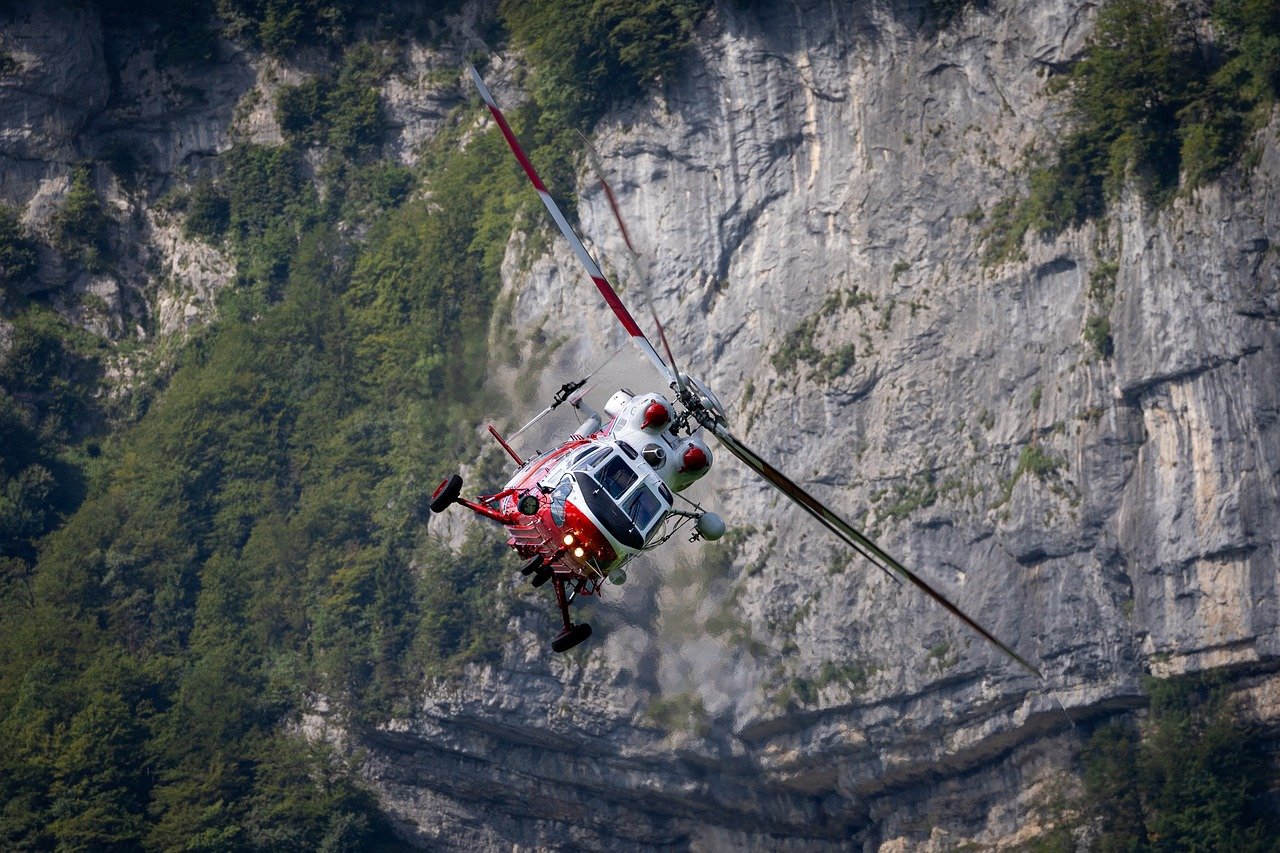
Data Collection and Analysis
In the fast-paced world of search and rescue operations, play a pivotal role in ensuring mission success. The ability to gather and interpret data in real-time can mean the difference between life and death during critical situations. Robots deployed in these scenarios are equipped with advanced sensors and technologies that allow them to collect a variety of data types, from environmental conditions to the precise location of victims.
For instance, ground robots can utilize thermal imaging to detect body heat, while drones can capture high-resolution aerial images that help in mapping out disaster-stricken areas. This data is then analyzed to create a comprehensive situational overview, which is essential for making informed decisions quickly. Imagine being in a chaotic environment where every second counts; having accurate data at your fingertips can be the lifeline rescuers need.
Moreover, the integration of artificial intelligence in data analysis enhances the ability of these robots to interpret complex datasets. By employing machine learning algorithms, rescue robots can learn from past missions and improve their data analysis capabilities over time. This not only optimizes their performance but also enables them to identify patterns that might be overlooked by human analysts. For example, a robot could recognize the typical locations where victims are often found in specific types of disasters, allowing for more efficient search patterns in future missions.
To illustrate the impact of data collection in rescue missions, consider the following table:
| Data Type | Collection Method | Use in Rescue Operations |
|---|---|---|
| Thermal Imaging | Ground Robots | Detecting heat signatures of trapped individuals |
| Aerial Imagery | Drones | Mapping disaster zones and assessing damage |
| Environmental Data | Various Sensors | Understanding hazardous conditions (e.g., gas leaks) |
| Communication Data | Radio and Network Signals | Coordinating rescue efforts among teams |
This table highlights the diverse types of data that can be collected and their respective methods. Each type of data serves a unique purpose, contributing to a more effective rescue operation. The synergy between data collection and analysis not only enhances situational awareness but also improves the overall efficiency of rescue missions.
As technology continues to evolve, the importance of data collection and analysis in search and rescue operations will only grow. With the potential for even more sophisticated sensors and analytical tools, the future of rescue missions looks promising. The integration of these technologies will empower rescuers to make quicker, more informed decisions, ultimately saving more lives in emergencies.
- How do rescue robots collect data? Rescue robots collect data using various sensors, including thermal imaging, cameras, and environmental sensors, to gather information about their surroundings.
- What role does AI play in data analysis for rescue missions? AI enhances data analysis by allowing robots to learn from previous missions, recognize patterns, and make autonomous decisions based on real-time data.
- Can drones be used in all types of rescue operations? While drones are versatile, their effectiveness can be limited by factors such as weather conditions and regulatory restrictions.
- What are the benefits of using robots in search and rescue? Robots improve efficiency, increase safety for human rescuers, and enhance data collection capabilities during emergency operations.

Integration of AI in Rescue Robotics
The integration of artificial intelligence (AI) in rescue robotics marks a significant leap forward in the effectiveness and efficiency of search and rescue operations. Imagine a robot that can not only navigate through treacherous terrains but also make real-time decisions based on the data it collects. This is no longer a futuristic dream; it's a reality that is unfolding before our eyes. AI empowers rescue robots to analyze their surroundings, recognize patterns, and adapt to dynamic situations, ultimately enhancing their operational capabilities.
One of the most exciting aspects of AI in rescue robotics is its ability to process vast amounts of data quickly. For instance, when a disaster strikes, rescue teams often face overwhelming challenges in understanding the situation on the ground. Robots equipped with AI can gather critical information from their environment, such as identifying the locations of victims, assessing structural integrity, and even detecting hazardous materials. This data is invaluable for human rescuers as it allows them to make informed decisions swiftly, thereby increasing the chances of saving lives.
Furthermore, AI algorithms are designed to improve over time. Through machine learning, these robots can learn from past missions, refining their strategies and enhancing their performance in future operations. For example, if a robot encounters a specific type of obstacle during a rescue mission, it can analyze this experience and adjust its navigation techniques for similar situations in the future. This continuous learning process ensures that each operation becomes more efficient than the last, making rescue missions faster and more effective.
Another critical component of AI integration is the development of autonomous navigation systems. These systems allow robots to traverse complex environments without constant human oversight. Imagine sending a robot into a collapsed building, where visibility is poor and conditions are unstable. An autonomous robot can utilize advanced sensors and AI algorithms to navigate through debris, optimizing its search patterns while minimizing the risk to human rescuers. This capability not only enhances operational effectiveness but also significantly increases the safety of rescue teams.
To illustrate the impact of AI in rescue robotics, consider the following table that highlights key AI features and their benefits:
| AI Feature | Benefit |
|---|---|
| Real-time data analysis | Faster decision-making for rescue teams |
| Machine learning | Continuous improvement in performance |
| Autonomous navigation | Increased safety and efficiency in hazardous environments |
| Pattern recognition | Enhanced situational awareness and victim identification |
As we look toward the future, the integration of AI in rescue robotics promises to revolutionize how we approach emergency situations. With advancements in AI technology, we can expect robots to become even more adept at handling complex rescue scenarios, ultimately leading to more lives saved and more effective rescue operations. The synergy between human intuition and robotic efficiency creates a powerful tool that is reshaping the landscape of search and rescue missions.
- How does AI improve the efficiency of rescue robots?
AI enables robots to analyze data quickly, learn from past experiences, and navigate autonomously, leading to faster and more effective rescue operations. - What are the challenges of integrating AI into rescue robotics?
Challenges include ensuring reliable communication, managing complex algorithms, and maintaining safety protocols in unpredictable environments. - Will AI replace human rescuers in the future?
While AI will enhance the capabilities of rescue robots, human judgment and expertise will remain essential in critical situations.
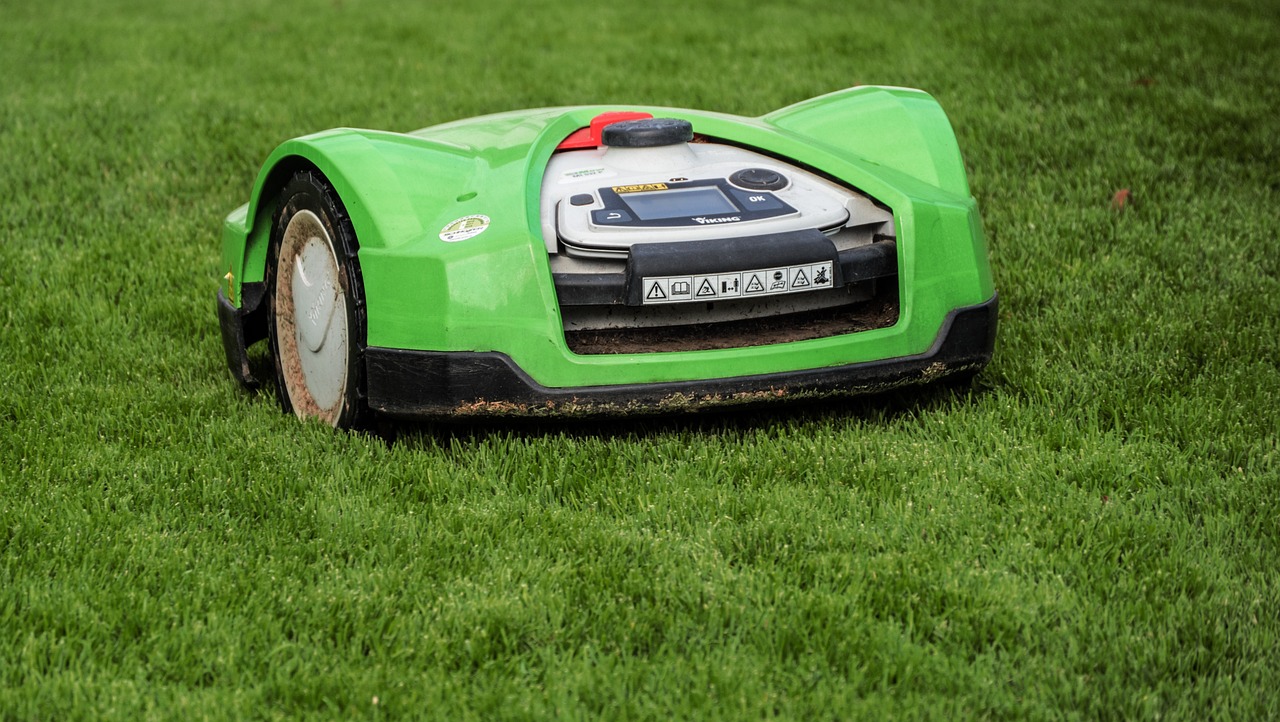
Machine Learning Algorithms
Machine learning algorithms are at the forefront of enhancing the capabilities of rescue robots, transforming them from mere tools into intelligent partners in critical situations. These algorithms enable robots to process vast amounts of data, learn from previous experiences, and adapt to new challenges in real time. Imagine a rescue robot that not only navigates through rubble but also learns the best paths to take based on past missions. This is the power of machine learning in action.
One of the most significant advantages of employing machine learning in rescue operations is the ability to recognize patterns and anomalies in data. For instance, a robot equipped with machine learning capabilities can analyze the sounds and movements in a disaster zone to identify potential victims trapped under debris. By comparing real-time data with historical data, these robots can make informed decisions about where to focus their search efforts, significantly increasing the chances of locating survivors.
Moreover, machine learning algorithms can be categorized into several types, each serving unique purposes in rescue missions:
- Supervised Learning: This involves training the robot with labeled data, allowing it to predict outcomes based on new input. For example, a robot might be trained to recognize the sound of a human voice amidst the chaos of a disaster.
- Unsupervised Learning: In this case, the robot analyzes data without prior labeling, discovering patterns and relationships on its own. This can help in identifying new types of hazards in a disaster area.
- Reinforcement Learning: Here, robots learn optimal behaviors through trial and error, receiving rewards for successful actions. This is particularly useful in dynamic environments where conditions change rapidly.
As these algorithms evolve, so does the potential for robots to handle increasingly complex scenarios. For example, during a search and rescue operation in a collapsed building, a robot utilizing reinforcement learning might discover that traversing certain pathways leads to faster victim identification. The robot can then prioritize these paths in future missions, constantly refining its approach to maximize efficiency.
Furthermore, the integration of machine learning with other technologies, such as computer vision and sensor data, allows rescue robots to operate with remarkable precision. By analyzing visual data, robots can differentiate between debris and potential survivors, ensuring that search efforts are both effective and safe. This synergy between machine learning and advanced technologies creates a powerful toolset for rescuers, ultimately enhancing the likelihood of saving lives.
In summary, machine learning algorithms are revolutionizing the way rescue robots operate. By empowering these machines with the ability to learn and adapt, we are not only enhancing their efficiency but also significantly improving their effectiveness in life-saving missions. As we continue to innovate and refine these technologies, the future of search and rescue operations looks brighter than ever.
- What are machine learning algorithms? Machine learning algorithms are computational methods that allow systems to learn from data and improve their performance over time without being explicitly programmed.
- How do machine learning algorithms enhance rescue robots? They enable robots to analyze data, recognize patterns, and adapt to changing environments, making them more effective in locating survivors and navigating complex disaster zones.
- Can rescue robots operate autonomously? Yes, many rescue robots equipped with machine learning and autonomous navigation systems can operate with minimal human intervention, allowing for faster response times in emergencies.

Autonomous Navigation Systems
In the realm of search and rescue operations, are revolutionizing how robots traverse complex environments. Imagine a robot that can navigate through a disaster-stricken area without needing a human operator! This technology is akin to giving a robot a sixth sense, allowing it to understand its surroundings and make decisions on the fly. By leveraging advanced sensors, mapping technologies, and real-time data processing, these systems enable robots to efficiently navigate through debris, rough terrains, and unpredictable landscapes.
One of the key features of autonomous navigation systems is their ability to create detailed maps of the environment. Using techniques such as Simultaneous Localization and Mapping (SLAM), robots can build a map of an unknown area while keeping track of their own location within that space. This capability is crucial during search and rescue missions where human rescuers may not be able to access certain areas due to hazards or obstacles. By utilizing LiDAR, cameras, and other sensory equipment, these robots can detect obstacles, identify safe paths, and navigate effectively without constant human input.
Moreover, these systems are designed to adapt to dynamic environments. For instance, if a robot encounters an unexpected obstacle, it can quickly analyze the situation, determine alternative routes, and continue its mission. This adaptability is particularly important in emergency scenarios where conditions can change rapidly, such as after an earthquake or a flood. The ability to make real-time decisions not only increases the efficiency of the rescue operations but also enhances the safety of both the robots and the human teams working alongside them.
To illustrate how these systems operate, consider the following table that highlights the core components of autonomous navigation systems in rescue robotics:
| Component | Description |
|---|---|
| Sensors | Devices that detect environmental conditions (e.g., LiDAR, cameras, ultrasonic sensors). |
| Mapping Algorithms | Techniques used to create a map and localize the robot within it (e.g., SLAM). |
| Decision-Making Software | AI algorithms that analyze data and make autonomous navigation decisions. |
| Communication Systems | Technologies that allow robots to share information with rescue teams and other robots. |
As we look to the future, the integration of machine learning will further enhance these systems. By analyzing past navigation data, robots can improve their algorithms, allowing them to navigate more efficiently in future missions. This continuous learning process is akin to how humans refine their skills through experience. The more missions these robots undertake, the better they become at understanding their environments and making swift, effective decisions.
In conclusion, autonomous navigation systems are not just a technological advancement; they are a game-changer for search and rescue operations. By enabling robots to navigate autonomously, we are not only increasing the chances of successful rescues but also ensuring the safety of human rescuers. As these technologies evolve, we can expect to see even more innovative solutions that will enhance our ability to respond to emergencies and save lives.
- What are autonomous navigation systems? Autonomous navigation systems are technologies that allow robots to navigate through environments without human intervention, using sensors and algorithms to make real-time decisions.
- How do these systems improve search and rescue operations? They enable robots to navigate hazardous areas safely and efficiently, reducing the risk to human rescuers and increasing the likelihood of successful missions.
- What technologies are involved in autonomous navigation? Key technologies include LiDAR, cameras, mapping algorithms like SLAM, and decision-making software powered by AI.
- Can these robots learn from their experiences? Yes, many autonomous systems use machine learning to improve their navigation strategies based on past missions.
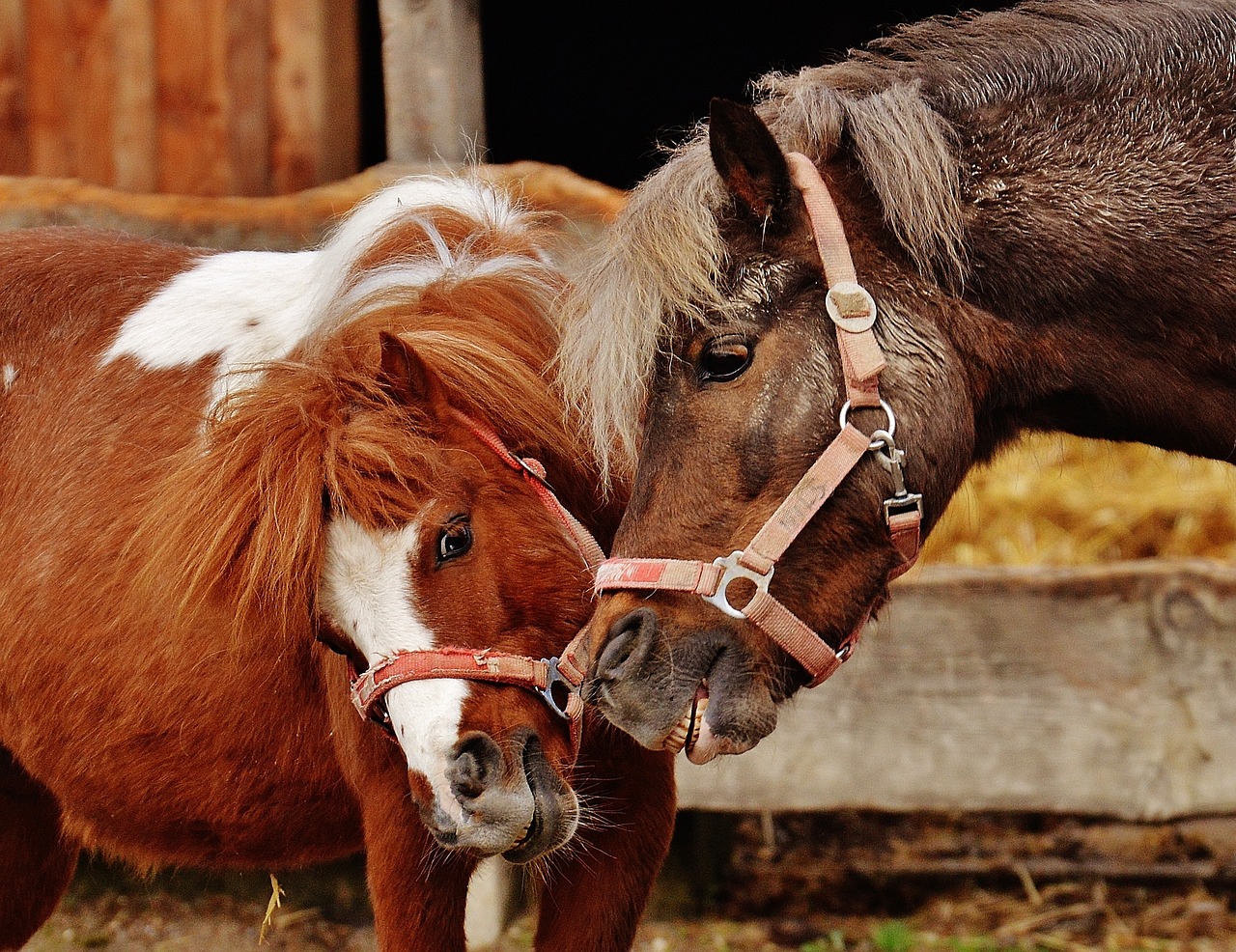
Future Trends in Robotic Rescue Operations
The future of robotics in search and rescue operations is not just bright; it’s positively electrifying! With rapid advancements in technology, we are on the brink of a revolution that will redefine how we respond to emergencies. Imagine a world where swarm robotics can cover vast areas in a fraction of the time it currently takes, or where enhanced artificial intelligence allows robots to make autonomous decisions in real-time. These innovations are not merely theoretical; they are becoming a reality, and they promise to transform rescue missions into far more efficient and effective endeavors.
One of the most exciting trends is the development of swarm robotics. This concept involves deploying multiple robots that work collaboratively to tackle complex search and rescue challenges. Much like a flock of birds or a school of fish, these robots can communicate and coordinate their movements, allowing them to cover larger areas more efficiently. This not only enhances search capabilities but also significantly improves the overall success rates of missions. Imagine a swarm of tiny drones scouring a disaster zone, relaying information back to rescue teams in real-time! The synergy created by these robots can lead to quicker victim location and more effective resource allocation.
Another promising area is the advancement in communication technologies. As rescue operations often take place in chaotic environments, having seamless communication between robots and human teams is crucial. Improved communication systems will ensure that data flows smoothly, enabling rescue teams to make informed decisions based on real-time information. For instance, if a ground robot discovers a trapped victim, it can immediately relay the coordinates to aerial drones, which can then assist in planning a safe extraction. This level of coordination can be a game-changer in high-stakes scenarios.
Furthermore, the integration of advanced artificial intelligence into rescue robotics is set to enhance their capabilities significantly. With AI, robots can analyze patterns and adapt to changing conditions on the ground. For example, they can learn from past missions, improving their performance in future operations. This learning capability means that robots can not only execute pre-programmed tasks but also make informed decisions based on their environment. Imagine a robot that can recognize the sound of a person calling for help and navigate towards the source without human intervention!
As we look toward the future, it’s clear that the landscape of robotic rescue operations will continue to evolve. The integration of machine learning algorithms will empower robots to become smarter and more efficient. These algorithms will allow robots to analyze vast amounts of data, enabling them to identify the best strategies for navigating disaster zones. The potential for autonomous navigation systems is also immense. These systems will allow robots to traverse complex terrains without human input, optimizing search patterns and ensuring that no area is left unchecked.
In summary, the future of robotic rescue operations is filled with possibilities that could save countless lives. With innovations like swarm robotics, enhanced communication technologies, and the integration of artificial intelligence, we are moving towards a future where rescue missions are not only faster but also safer. The combination of these technologies will create a synergistic effect, leading to more effective responses in emergencies. As we continue to push the boundaries of what is possible, the dream of fully autonomous rescue operations is closer than ever before!
- What are swarm robotics? Swarm robotics refers to a system where multiple robots work together to achieve a common goal, much like how insects or animals coordinate in nature.
- How does AI improve rescue operations? AI enhances rescue operations by enabling robots to make autonomous decisions, learn from previous experiences, and adapt to changing environments.
- What role do communication technologies play in robotics? Communication technologies facilitate real-time data sharing between robots and human teams, ensuring better coordination and decision-making during rescue missions.
- Will robots replace human rescuers? While robots will enhance rescue operations, they are designed to assist human rescuers, not replace them. The combination of human intuition and robotic efficiency is key to successful missions.

Swarm Robotics
Imagine a team of tiny robots working together like a swarm of bees, each one playing a crucial role in a larger mission. is an innovative approach that leverages the power of multiple robots to collaborate and tackle complex tasks, particularly in search and rescue operations. This technology allows for the coverage of larger areas more efficiently than a single robot could manage, significantly enhancing the chances of successful missions. By mimicking the natural behaviors of social insects, swarm robotics can adapt to changing environments, making them invaluable in disaster scenarios.
One of the most exciting aspects of swarm robotics is its ability to perform distributed problem-solving. Each robot in the swarm can communicate with its peers, sharing information about environmental conditions, obstacles, and potential victim locations. This collective intelligence enables the swarm to make real-time decisions, optimizing their search patterns and increasing operational effectiveness. For instance, if one robot detects a heat signature or sound indicative of a trapped individual, it can relay this information to others, allowing the swarm to converge on that location swiftly.
In practical terms, swarm robotics can be deployed in various scenarios, such as:
- Natural Disasters: After earthquakes, floods, or landslides, swarms can quickly cover vast areas to locate survivors.
- Urban Search and Rescue: In the aftermath of building collapses, swarms can navigate rubble and debris to find trapped individuals.
- Hazardous Environments: In situations involving chemical spills or fires, swarms can operate in dangerous areas where human rescuers cannot safely go.
Moreover, the scalability of swarm robotics is a game-changer. As technology advances, it becomes easier and more cost-effective to produce numerous small robots. This means that rescue teams can deploy a larger swarm without significantly increasing costs or logistical challenges. The more robots there are, the more data can be collected, and the higher the likelihood of locating victims quickly.
However, the implementation of swarm robotics is not without its challenges. Coordinating a large number of robots requires sophisticated algorithms and robust communication systems to ensure that they work together harmoniously. Additionally, as with any technology, there are concerns about reliability, battery life, and the potential for technical malfunctions. Nevertheless, the ongoing research and development in this field promise to address these issues, paving the way for more effective and reliable swarm robotics in future rescue operations.
- What is swarm robotics? Swarm robotics involves multiple robots working collaboratively to accomplish tasks, mimicking the behavior of social insects.
- How does swarm robotics enhance search and rescue operations? By covering larger areas more efficiently and adapting to dynamic environments, swarm robotics increases the chances of locating victims quickly.
- What are the challenges faced by swarm robotics? Challenges include coordination among robots, communication reliability, and technical malfunctions.
- What types of missions can swarm robotics be used for? Swarm robotics can be utilized in natural disasters, urban search and rescue, and hazardous environments.

Advancements in Communication Technology
This article explores the transformative impact of robotics in search and rescue missions, highlighting advancements, applications, and the future potential of robotic technologies in saving lives during emergencies.
An overview of the historical development of robotics in search and rescue, detailing significant milestones and technological advancements that have shaped current practices.
Exploring various types of robots used in search and rescue operations, including drones, ground robots, and underwater vehicles, each designed for specific environments and challenges.
UAVs play a crucial role in search operations, providing aerial surveillance, real-time data collection, and rapid deployment capabilities in hard-to-reach areas.
Drones are effectively utilized in disaster scenarios for mapping, locating victims, and assessing damage, significantly enhancing situational awareness for rescue teams.
Despite their advantages, UAVs face challenges such as limited battery life, regulatory restrictions, and adverse weather conditions that can hinder their effectiveness in rescue operations.
Ground robots are designed to navigate challenging terrains, assisting rescue teams by transporting supplies, conducting searches, and providing communication support in disaster zones.
Robotics significantly improves efficiency and safety in rescue operations, enabling faster response times, reducing human risk, and enhancing data collection capabilities during emergencies.
By deploying robots in hazardous environments, human rescuers can minimize their exposure to danger, allowing for safer and more effective operations.
Robots equipped with advanced sensors gather critical data during missions, aiding in real-time decision-making and improving overall mission outcomes.
Artificial intelligence enhances the capabilities of rescue robots, enabling them to make autonomous decisions, recognize patterns, and adapt to dynamic environments during operations.
Machine learning algorithms empower robots to learn from past missions, improving their performance and efficiency in future search and rescue operations.
Autonomous navigation systems allow robots to maneuver through complex environments without human intervention, optimizing search patterns and increasing operational effectiveness.
The future of robotics in search and rescue is promising, with emerging technologies such as swarm robotics, enhanced AI, and improved communication systems set to revolutionize the field.
Swarm robotics involves multiple robots working collaboratively to cover larger areas more efficiently, enhancing search capabilities and improving overall mission success rates.
In the realm of search and rescue operations, communication technology has seen remarkable advancements that are reshaping how teams coordinate and execute their missions. The integration of real-time communication tools and advanced networking systems has become essential for ensuring that information flows seamlessly between rescue teams and their robotic counterparts. For instance, the deployment of 5G networks allows for high-speed data transfer, enabling live video feeds and immediate data sharing, which are critical during emergencies.
Moreover, the use of mesh networks ensures that communication remains intact even when traditional networks fail. These networks allow robots to communicate with each other and with human rescuers over long distances, creating a resilient communication backbone in challenging environments. This capability is particularly vital in disaster zones where infrastructure might be compromised. The ability to maintain connectivity enables teams to coordinate more effectively, ensuring that every rescue operation is executed with precision.
Additionally, advancements in augmented reality (AR) and virtual reality (VR) are enhancing situational awareness for rescuers. Imagine a scenario where a rescuer, equipped with AR glasses, receives real-time data overlays about the environment, including locations of trapped individuals or hazardous areas. This technology not only improves decision-making but also boosts the confidence of rescuers as they navigate through complex terrains.
As we look to the future, the integration of artificial intelligence into communication systems promises even greater enhancements. AI can analyze communication patterns and predict potential failures, allowing teams to preemptively address issues before they escalate. This proactive approach can be the difference between life and death in critical situations.
- What types of robots are primarily used in search and rescue operations?
Search and rescue operations utilize various types of robots, including drones (UAVs), ground robots, and underwater vehicles, each tailored for specific environments and challenges.
- How does AI improve rescue operations?
AI enhances rescue operations by enabling robots to make autonomous decisions, learn from past missions, and adapt to changing environments, improving overall efficiency and effectiveness.
- What are the main challenges faced by UAVs in rescue missions?
UAVs face challenges such as limited battery life, regulatory restrictions, and adverse weather conditions, which can hinder their operational effectiveness.
Frequently Asked Questions
- What are the main types of robots used in search and rescue operations?
Search and rescue operations utilize various types of robots, primarily unmanned aerial vehicles (UAVs), ground-based robots, and underwater vehicles. Each type is specifically designed to tackle different environments and challenges, enhancing the overall effectiveness of rescue missions.
- How do drones improve search and rescue efforts?
Drones offer a multitude of benefits in search and rescue scenarios. They provide aerial surveillance, collect real-time data, and can be rapidly deployed to hard-to-reach areas. This capability significantly boosts situational awareness for rescue teams, helping them locate victims and assess damage swiftly.
- What challenges do UAVs face in rescue operations?
Despite their advantages, UAVs encounter several challenges. These include limited battery life, which restricts flight duration, regulatory restrictions that can complicate deployment, and adverse weather conditions that may hinder their functionality during critical operations.
- How do ground robots assist in rescue missions?
Ground robots are designed to navigate challenging terrains and provide crucial support to rescue teams. They assist by transporting supplies, conducting searches, and offering communication support in disaster zones, ultimately enhancing the overall efficiency of the rescue efforts.
- What role does artificial intelligence play in rescue robotics?
Artificial intelligence significantly enhances the capabilities of rescue robots. It allows them to make autonomous decisions, recognize patterns, and adapt to dynamic environments, which is essential for effective operation in unpredictable scenarios.
- What are the future trends in robotic rescue operations?
The future of robotic rescue operations is bright, with trends such as swarm robotics, where multiple robots work together to cover larger areas, and advancements in communication technology that will improve coordination among rescue teams and robots, ensuring better information sharing and operational efficiency.



















